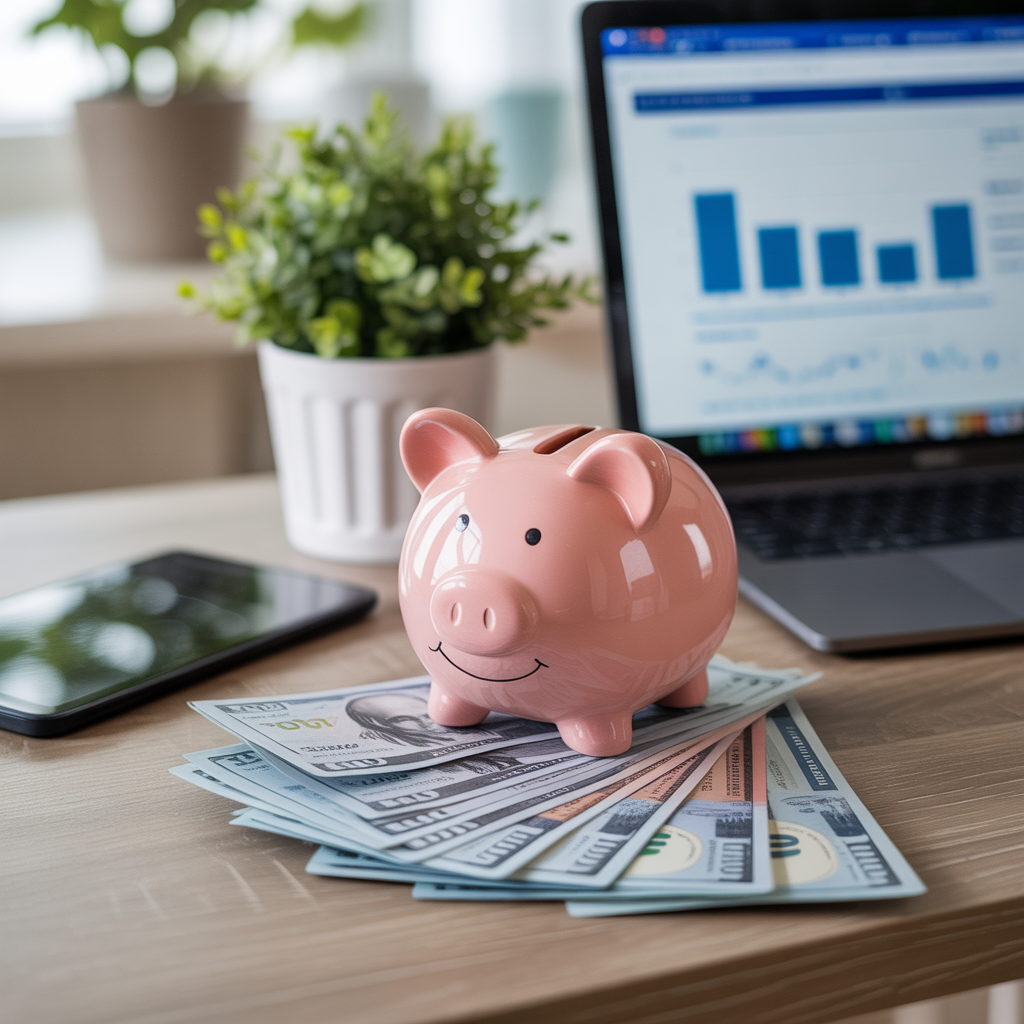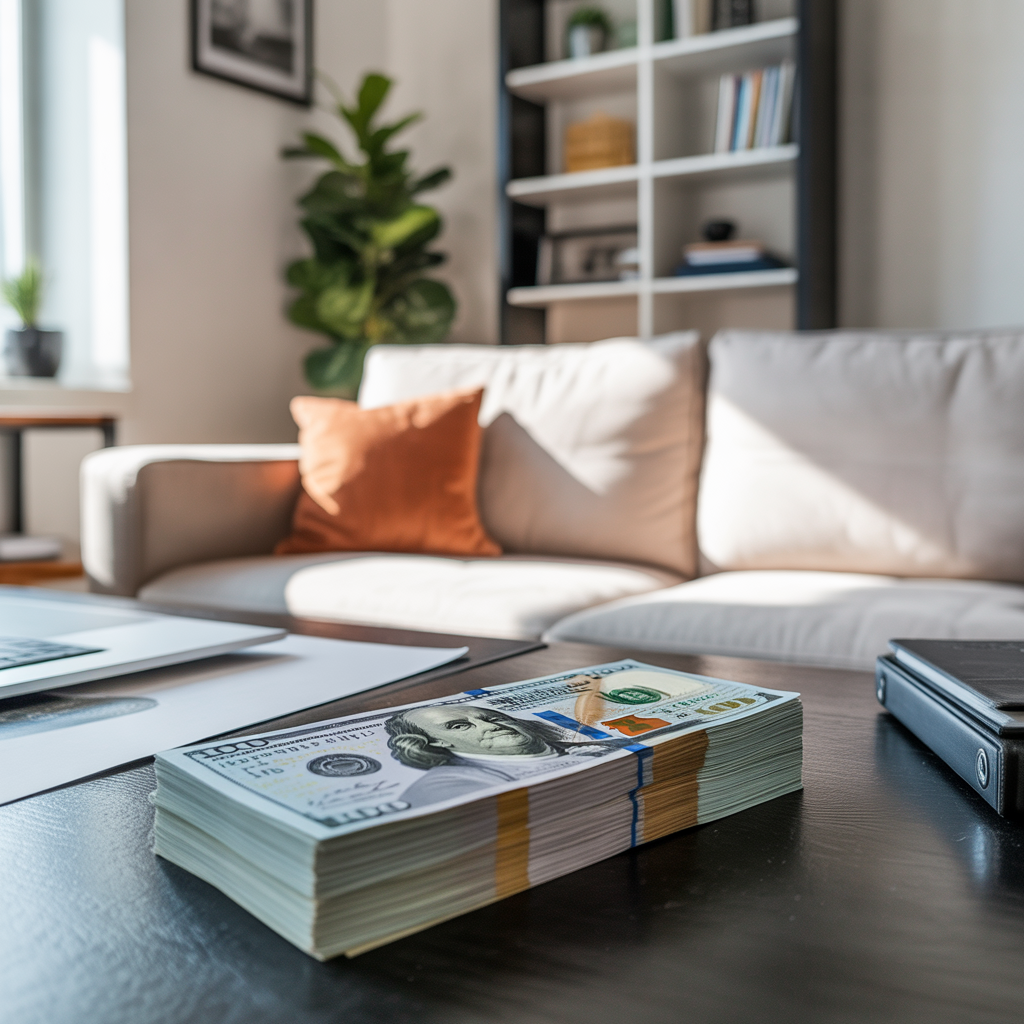How to Start Saving Money: Simple Tips to Grow Your Savings
Ready to break the paycheck-to-paycheck cycle? Start with the $1000 emergency fund challenge, add simple money saving tips, and build good money habits. These practical financial tips will grow your savings and give you the peace of mind you deserve.

Are you tired of feeling like payday comes, money goes, and you’re back at zero before you even realize it, constantly wondering how you’ll cover the next unexpected bill, you’re not alone. I’ve been there too—more times than I’d like to admit. The good news? Saving money doesn’t have to feel impossible or overwhelming. With the right mindset, some smart money saving tips, and a plan you can actually stick to, you can start building real financial stability.

And before you think, “Yeah, but I don’t make enough to save…” trust me, saving isn’t about having stacks of extra cash lying around. It’s about creating good money habits and making small, intentional choices that add up over time.
In this blog, I’ll walk you through the why, the how, and the everyday steps that will help you save. We’ll talk about building your emergency fund, tackling the $1000 emergency fund challenge, and adding practical strategies into your daily life that won’t make you feel deprived. By the end, you’ll see how saving can become part of your lifestyle—not just another chore on your to-do list.
Why Saving Money Matters
Saving money isn’t just about buying a house someday or stashing away enough to retire on a beach (though hey, those are great goals). It’s about security and flexibility. When you save, you’re protecting yourself against the unknown—the flat tire, the medical bill, the random school field trip that costs $75 for reasons no one can explain.
Having savings means you’re not living in constant fear of what could go wrong. You can breathe easier, stress less, and even start dreaming bigger. That’s the kind of financial flexibility most of us are chasing.
👉 Ready to take your first step? Download my free guide: 7 Money Rules You Must Learn Before It’s Too Late. These foundational rules will help you start reshaping how you think about money, so saving feels doable and—dare I say it—empowering.

The Power of an Emergency Fund
Let’s start with the backbone of financial security: your emergency fund. Think of it as your financial seatbelt. You hope you won’t need it, but you’ll be glad it’s there when life throws you a curveball.
Without savings, even a small unexpected expense—like a $300 car repair—can completely derail your budget and send you straight into credit card debt. But with an emergency fund, those same expenses become inconveniences, not disasters.
Most experts recommend having three to six months of expenses stashed away, but if that feels like climbing Everest right now, don’t panic. We’ll start smaller—and that’s where the $1000 emergency fund challenge comes in.

The $1000 Emergency Fund Challenge
If you’ve been putting off saving because you feel like you’ll never get to three months’ worth of expenses, I want you to shift your focus. Forget the big scary numbers for now. Let’s just start with $1000.
Why $1000? Because it’s enough to cover most everyday emergencies: a car repair, a medical copay, or a surprise bill. It’s also small enough to feel achievable.
How to Tackle the Challenge
- Set the goal. Write it down: “I’m building a $1000 emergency fund.” Stick it on your fridge, mirror, or wherever you’ll see it.
- Cut and redirect. Cancel subscriptions you don’t use, cook at home more often, or pause unnecessary purchases. Even $10 here and there adds up.
- Automate savings. Have a set amount automatically moved to a separate savings account each payday. If you never see it, you won’t miss it.
- Side hustle smart. Whether it’s selling items online or picking up a weekend gig, even a little extra income speeds things up.
Before you know it, you’ll have your first $1000 tucked away. That fund is your safety net—the first step toward real security.
👉 Need help figuring out where this fits into your bigger financial journey? Book a free Personal Financial Strategy Intro Call with Joy & Jill. We’ll help you look at your full picture, make a plan, and keep you accountable as you build your savings.

Assess Your Current Financial Situation
Okay, here comes the part most people avoid: actually looking at your money. But trust me, you can’t save effectively if you don’t know where your dollars are going.
- Track income and expenses. Use a budgeting app, a simple spreadsheet, or even a notebook. The point is to see your money clearly.
- Spot the leaks. Those random Amazon orders, unused subscriptions, and weekly takeout add up more than you think.
- Reallocate. Once you see where your money’s going, redirect even small amounts into your emergency fund.
This step might not feel fun, but it’s one of the most important. Awareness is the first step to change.
Money Saving Tips You Can Use Today
Now for the part everyone loves—actual money saving tips that make a difference without making you feel like you’re living on ramen noodles.
1. Slash Monthly Bills
- Negotiate lower rates for internet or insurance.
- Cancel subscriptions you don’t use.
- Bundle services for discounts.
2. Shop Smarter
- Use coupons, cashback apps, and discount codes.
- Buy in bulk (when it makes sense).
- Stick to a shopping list. (Impulse buys are sneaky budget killers.)
3. Rethink Transportation
- Carpool, use public transit, or walk when possible.
- Keep your car maintained—regular oil changes save on costly repairs.
- Use fuel-saving apps to find the cheapest gas.
4. Save on Food
- Plan meals and cook at home.
- Buy seasonal produce (cheaper + fresher).
- Pack lunches instead of relying on takeout.
5. Low-Cost Fun
- Explore free community events.
- Have game nights or potlucks with friends.
- Take advantage of nature—parks, trails, beaches.
👉 Want tools to make these tips stick? Grab my FREE Financial Planner Bundle (a $47.00 value!). It includes trackers and planners that help you build good money habits by staying on top of your budget, savings, and bills.

Building Good Money Habits
Saving isn’t just about tricks and hacks—it’s about building long-term good money habits that keep your financial life steady. Habits like:
- Pay yourself first. Treat savings like a bill, not an afterthought.
- Automate. Remove the temptation to skip.
- Review monthly. Adjust your budget as your life changes.
- Celebrate progress. Every $50 you save is a win worth acknowledging.
The goal isn’t perfection—it’s progress. Small wins build momentum, and momentum builds lasting change.
Financial Tips for Long-Term Success
Once your $1000 emergency fund challenge is complete, don’t stop there. Keep growing that safety net toward 3–6 months of expenses. Pair it with retirement contributions, debt payoff strategies, and maybe even investments down the road.
Some quick financial tips for the long game:
- Open a high-yield savings account to make your money work harder.
- Automate transfers to retirement accounts.
- Protect your savings by separating it from checking (out of sight, out of mind).
These steps aren’t glamorous, but they’re the building blocks of financial freedom.
Start Small, Dream Big
Here’s the truth: you don’t need a six-figure salary or a finance degree to start saving. You just need commitment, consistency, and a willingness to take that first step.
Start with your emergency fund. Tackle the $1000 emergency fund challenge. Layer in some practical money saving tips. Build from there. And remember—this isn’t about perfection, it’s about creating good money habits that last.
Because when you know you’re covered for life’s “what ifs,” you don’t just save money—you gain peace of mind. And that, my friend, is priceless.
Affiliate Disclaimer
This blog may contain affiliate links, which means I may earn a small commission if you click on a link and make a purchase—at no extra cost to you. As an affiliate, I only recommend products that I personally use, trust, and believe will add value to my readers. Your support helps keep this content free and allows me to continue sharing helpful tips and resources.
I am not a medical professional, and the information provided on this blog is for educational and informational purposes only. Always consult with a qualified healthcare provider before making any changes to your skincare or wellness routine.